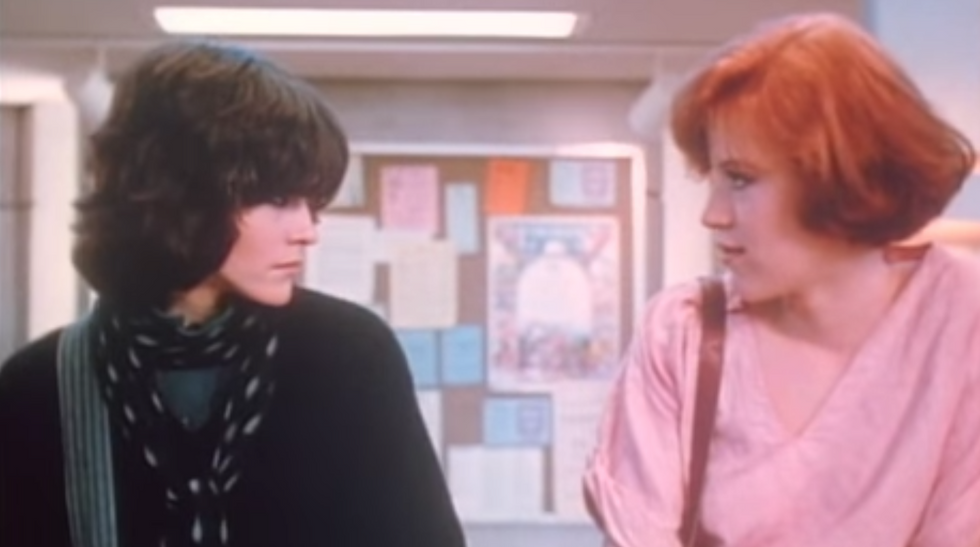What starts out in a letter that Brian narrates at the start of the film results in the story's main theme of personal identity. The letter starts off with "Dear Mr. Vernon, we accept the fact that we had to sacrifice a whole Saturday in detention for whatever it was we did wrong. But we think you're crazy to make us write an essay telling you who we think we are. You see us as you want to see us." This letter the five students had to write while serving detention is created after the students spent most of their Saturday in detention, getting to know more about themselves.
Each student comes from a different clique and background. Claire who is known as the "princess" is popular in high school. The next character we're introduced to is Brian who is known as the brain. Next up is John who is known as the juvenile. Also, another character is Andrew who is the athlete and Ally who is known as the basket case. Each student, by the end of detention, understands how to communicate with each other despite the students coming from different social cliques and having different values.
However, the thought of coming together and communicating with each other was not an easy task. The students had to get out of their comfort zones in order to achieve this. Each student had perceived thoughts over one another, and the director did a good job in conveying this to the audience when the characters were introduced and were dropped off at detention by their parents. For example, the princess is dropped off by her father in a BMW, and she lets her father know how she can't believe her father can't bail her out of detention.
In return, the father tells her he will make it up to her. This interaction with her father reveals how she depends on someone to get her out of a situation. Since she comes from a rich family, the princess has been taught that things will be handed to her instead of her working towards it. Yet, the interaction with the brain proved how each character had different values. For instance, when the brain is getting out of the car to go to detention, the mother tells the brain to use the time to his advantage by studying. When he says he cannot stud and will just sit there, the mom gets serious and tells her son he better think of a way to study. This interaction indicates how the brain has a lot of pressure to please his parents by doing good in school.
Throughout the film, the team of five individuals call themselves the "Breakfast Club" as they share secrets about themselves and have developed a friendship through their bond. Together, they are exploring their own identities. However, the princess then questions if they were ever to speak again outside of detention.
The princess did not think this was possible since they would be breaking societies norms of who communicates with each other and director John Hughes, leaves off the film for the audience to guess whether or not they would be able to speak with each other the next school day.
One of the lessons "The Breakfast Club" has taught society is that despite coming from different identities and values, each person can get along with one another if they communicate and spend time with each other. What happens next Monday, whether or not the students will interact with each other is up for the audience's interpretation, but this film deserves recognition for its exceptional delivery of high school cliques and how to break the cycle of cliques.









































